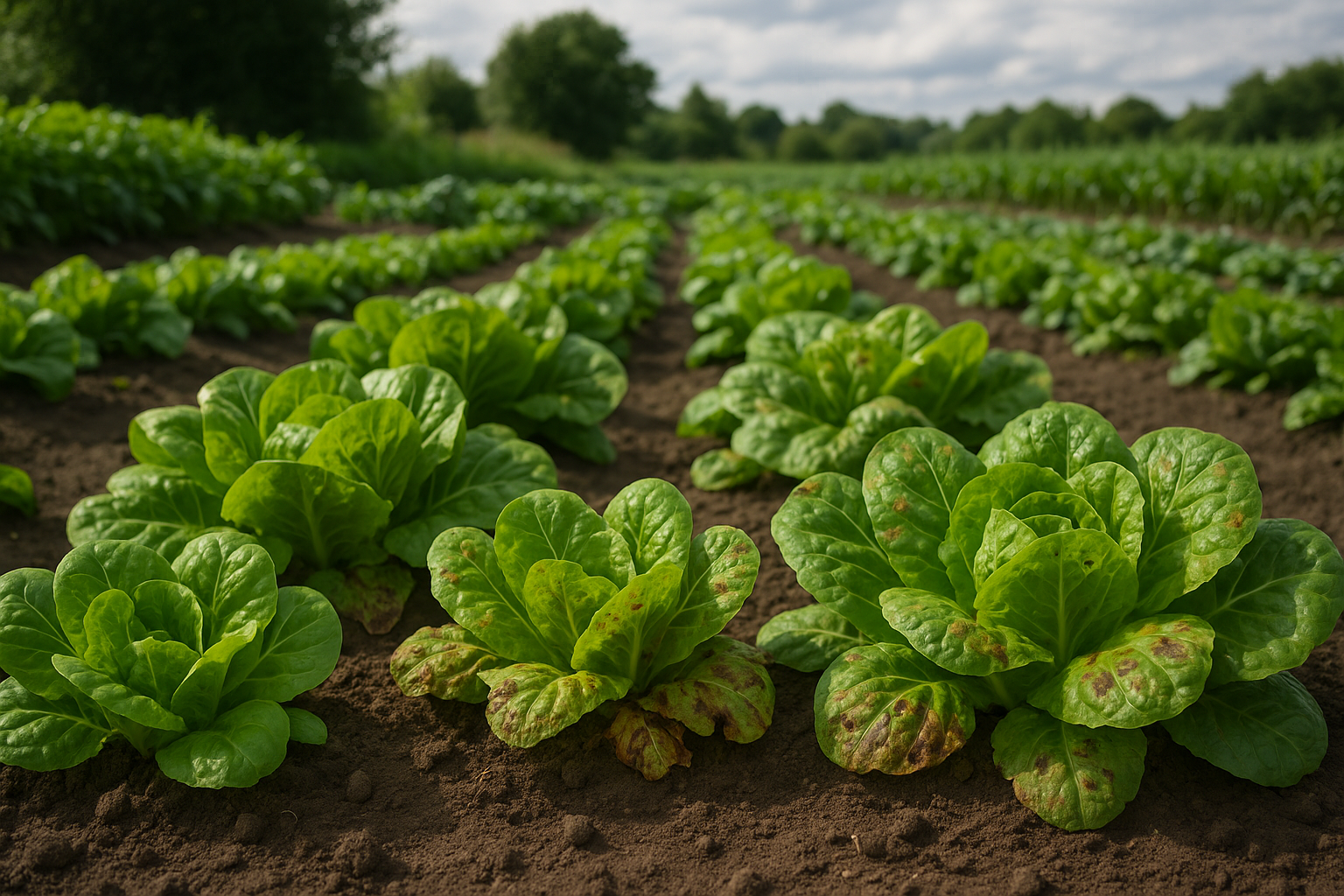Introduction
Lettuce diseases can be a major headache for both home gardeners and commercial growers, threatening yield, quality, and even entire crops if left unchecked. Whether you’re tending a small backyard patch or managing acres of fields, spotting brown-spotted leaves, sudden wilting, or strange mold growth can quickly turn a promising harvest into a real challenge.
The reality is that lettuce diseases—such as downy mildew, bacterial soft rot, and bottom rot—thrive in the same conditions favorable for healthy lettuce: cool, moist environments. This makes them even more common and sneaky. That’s why early detection and timely treatment matter so much. The quicker you can spot the first warning signs, the better your chances are of saving your plants and preserving your efforts.
But what exactly should you look for, and how can you keep these issues at bay? In this article, we’ll break down how to identify the most common lettuce diseases, share real-life tips for preventing outbreaks—think simple cultural practices and proper spacing—and walk you through effective treatment options available to both small-scale and larger growers. By the end, you’ll be better equipped to keep your lettuce beds robust and disease-free all season long.
Common Lettuce Diseases and Their Symptoms
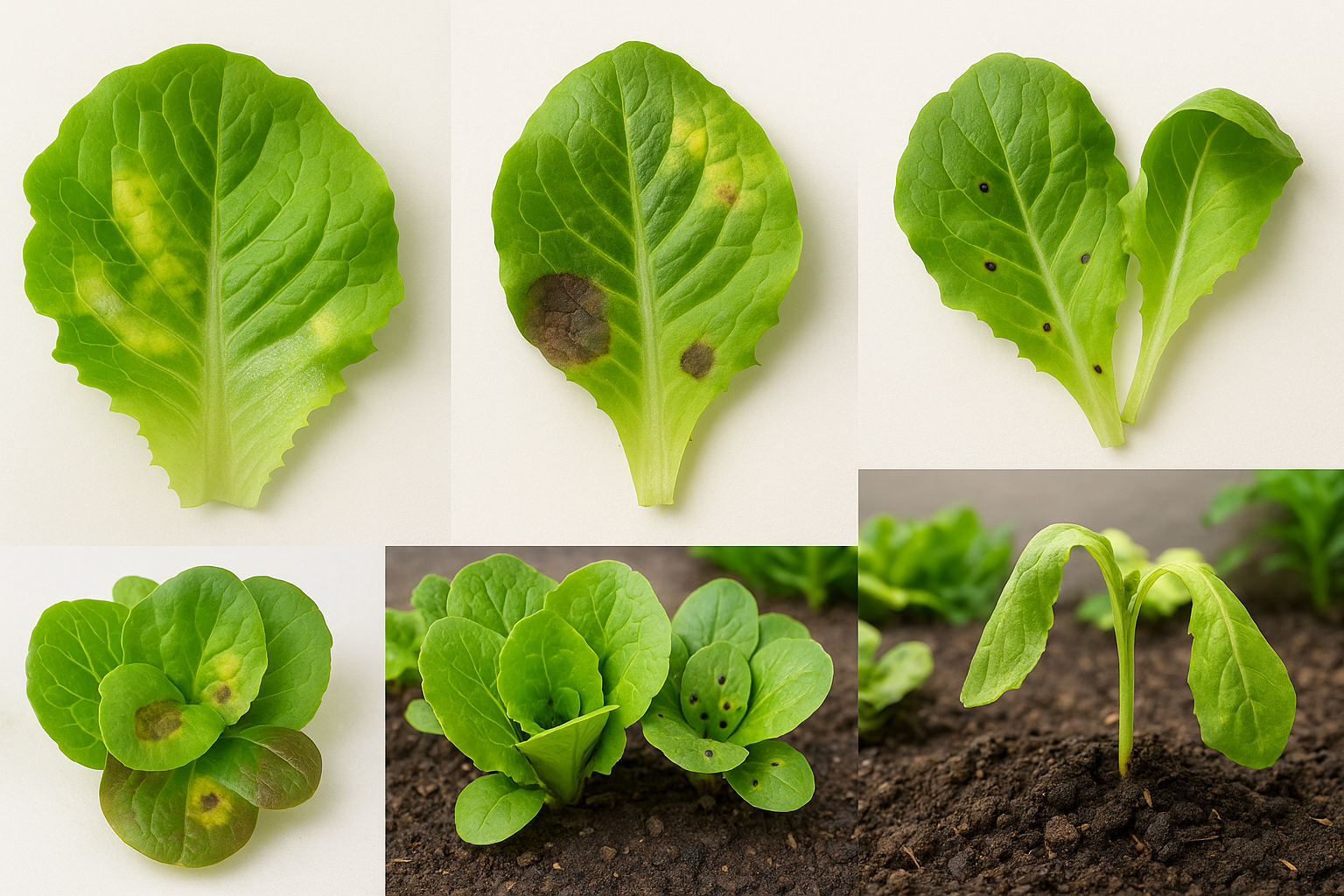
Lettuce, a popular crop in home gardens and farms, is vulnerable to several diseases that can quickly ruin a harvest if not caught early. One of the most widespread is Downy Mildew, which often appears as yellow patches on the top of leaves and a fuzzy white growth on their undersides, especially during cool, moist weather.
Bottom Rot, caused by the Rhizoctonia fungus, leads to brown, sunken spots on the lower leaves and stem, and can cause entire heads to collapse if it spreads. Lettuce Mosaic Virus is another concern, recognizable by mottled green and yellow patterns, stunted growth, and misshapen leaves; infected plants never fully recover.
Bacterial Leaf Spot causes small, water-soaked spots that turn brown or black and sometimes develop a yellow halo, particularly after rain or overhead irrigation. Finally, Damping Off is a soilborne issue that mostly affects young seedlings, making them wilt, collapse at the base, and die suddenly—often before the first true leaves even appear.
Because symptoms can sometimes look similar—like wilting or discolored spots—it’s important to correctly identify the cause before applying treatments. For example, fungicides won’t help if a virus is the issue, and overwatering can actually worsen fungal problems. Always examine plants carefully, compare symptoms to trusted resources or local extension guides, and consider recent weather patterns or cultural practices before making a plan. Early detection and correct diagnosis are key to saving your crop and preventing the disease from spreading further.
How to Identify Disease in Lettuce Plants
To spot disease in lettuce plants early, start by routinely inspecting your crop—ideally every few days—to catch subtle changes. Begin with the leaves, checking for yellowing, brown spots, or unusual patterns, as diseases often cause irregular discoloration, wilting, or fuzzy mold rather than the clean holes or chew marks typical of pest damage.
Gently probe the lower leaves and stems, as early signs usually show up here first. Don’t stop at what’s above ground; carefully uproot a plant occasionally to assess the roots. Healthy roots are white and crisp, while dark, mushy, or foul-smelling roots suggest disease rather than simple soil nutrient problems, which usually result in uniform leaf discoloration or stunted growth.
Assess overall plant health by comparing affected specimens to healthy ones; diseases often progress rapidly and spread in patches, unlike nutrient deficiencies, which manifest more slowly and evenly across the planting bed.
If you find symptoms such as leaf lesions, sudden wilting, or a dusty coating, act swiftly:
- Remove and destroy affected plants to prevent spread
- Clean your tools
- Avoid overhead watering
Time your interventions thoughtfully—minor leaf spotting or slow growth could respond to adjustments in watering or fertilizer, but widespread wilting, rapid die-off, or root rot mean it’s time to seek professional advice.
Reach out to a local agricultural extension or plant pathologist for accurate diagnosis and tailored treatment, as early, expert guidance can save your lettuce crop from major losses. Regular monitoring and quick action are your best defenses against devastating disease outbreaks.
Preventing Lettuce Diseases
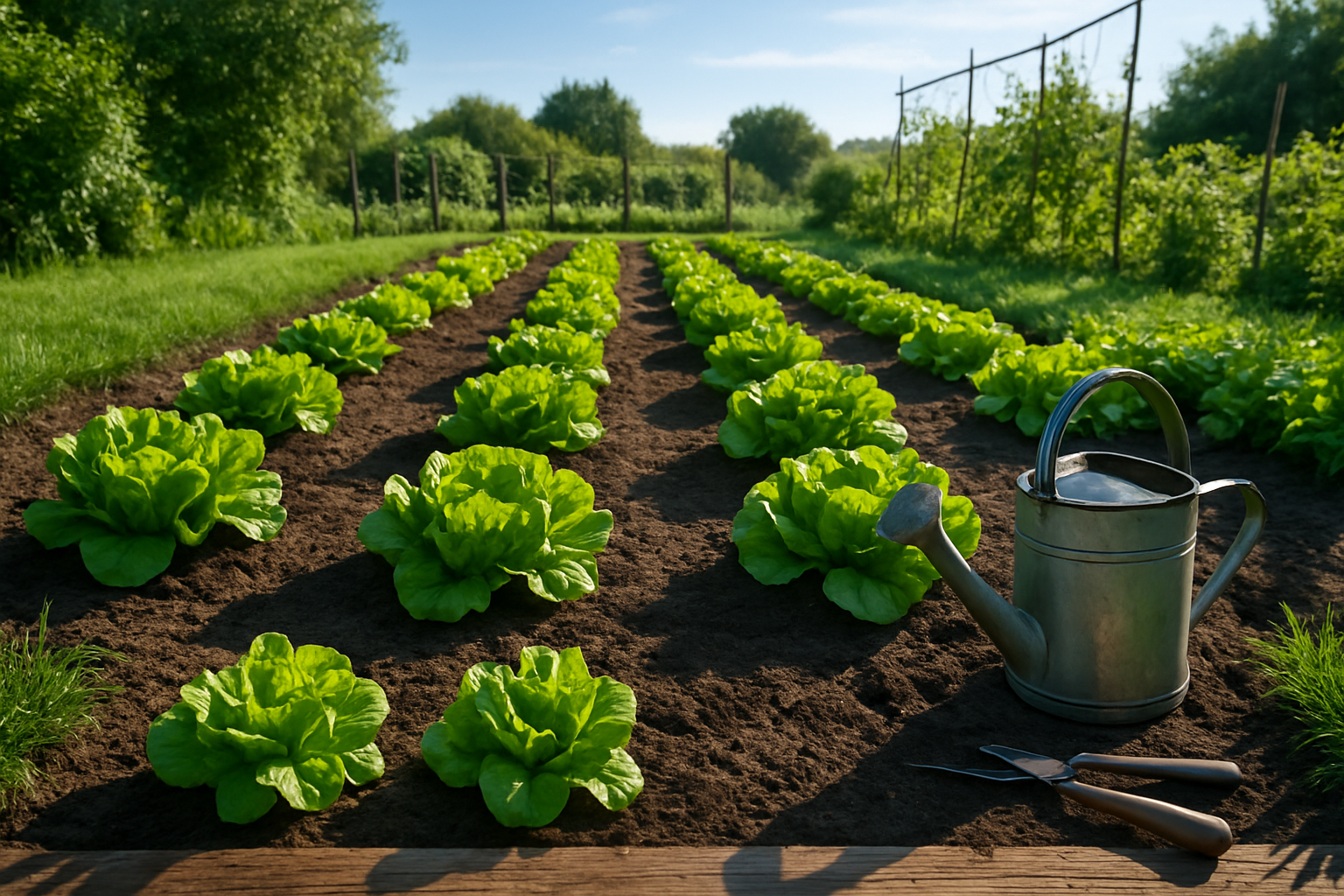
Keeping lettuce healthy starts with a few key prevention strategies that any gardener can implement. Crop rotation is essential; don’t plant lettuce in the same spot year after year, as soil-borne pathogens can build up and attack new crops. Aim to rotate where you grow lettuce every season with other unrelated crops—lettuce after beans or carrots, for example.
Proper plant spacing is also important. Crowded lettuce beds encourage humidity and block airflow, creating the perfect environment for diseases like mildew and rot. Make sure to follow seed packet instructions for spacing, or use a ruler to keep rows neat and plants far enough apart.
Maintaining garden sanitation pays off, too. Remove any plant debris, yellowing leaves, or weeds, as these can be hiding spots for disease pests. Dispose of infected material in the trash, not the compost pile.
Choosing disease-resistant lettuce varieties can make a big difference. Look for seeds labeled as resistant to downy mildew, tipburn, or mosaic virus, especially if these are common problems in your area.
Watering practices are critical for disease prevention. Try to water at the base of plants so leaves stay dry, and do it early in the morning to allow moisture to evaporate throughout the day. Avoid overhead sprinklers, which splash soil and germs onto leaves and prolong leaf wetness.
Improving garden airflow by keeping beds weeded and trimming nearby plants also cuts down on excess humidity.
Lastly, make it a habit to inspect your lettuce regularly. Look closely at leaves for spots, discoloration, or fuzz. Catching a problem early—like noticing a single mildewed leaf—means you can remove it before a minor issue turns into a garden-wide outbreak. This ongoing attention, paired with smart prevention, keeps your lettuce crisp, clean, and ready for harvest.
Effective Treatments for Common Lettuce Diseases
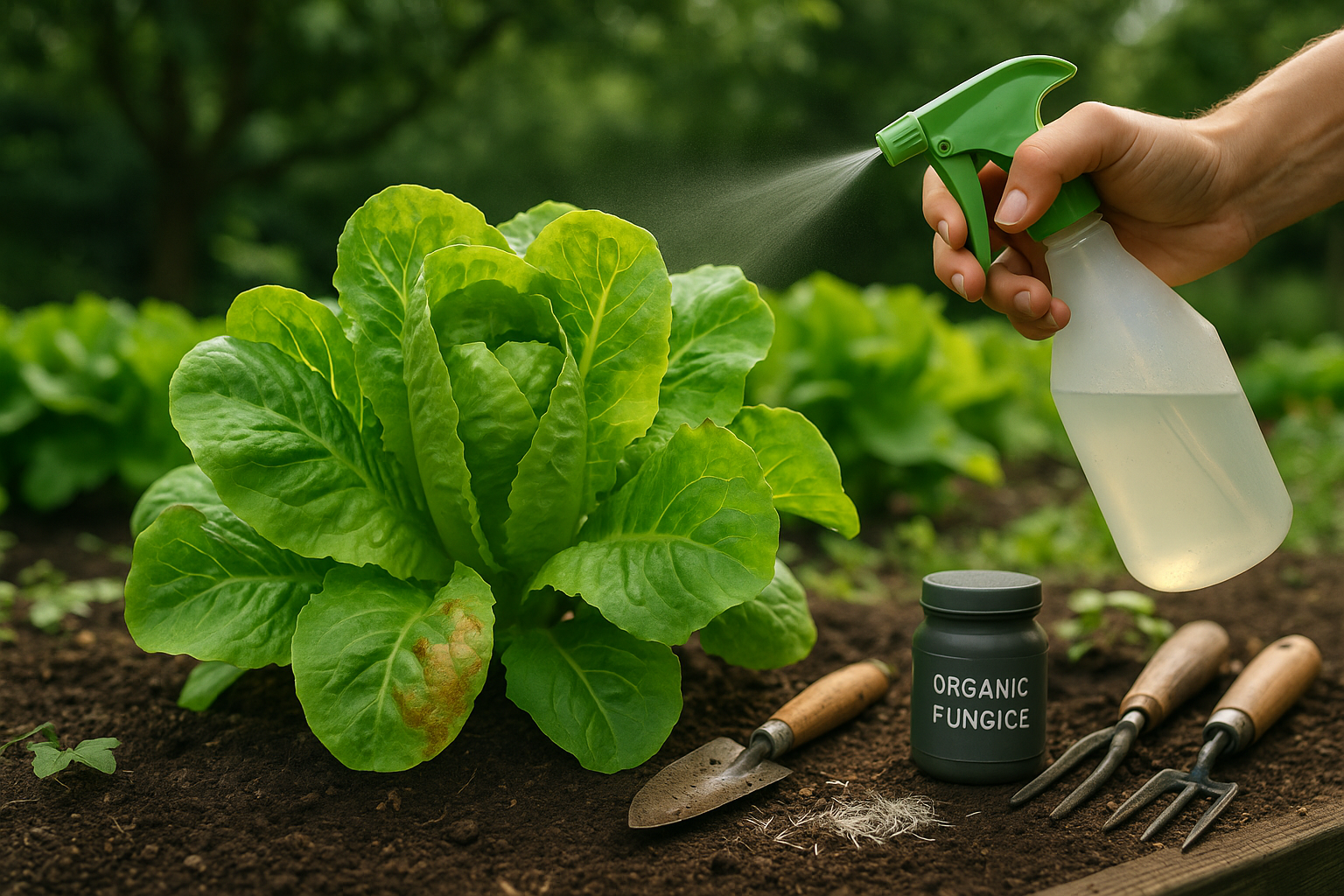
Treating common lettuce diseases effectively often requires a combination of organic and chemical methods, depending on the disease and your gardening preferences.
Fungal Diseases
For fungal issues like downy mildew or powdery mildew, start by removing and destroying any infected leaves or plants—never compost diseased material, since many pathogens survive and spread that way. Improve air circulation by spacing crops appropriately and watering at the base to reduce leaf wetness, as moist conditions can worsen most fungal and bacterial problems.
For organic control, copper-based fungicides and biofungicides containing Bacillus subtilis can help suppress fungal pathogens when used at the first sign of disease. Neem oil is also a safe, organic option against many fungal threats, but avoid spraying close to harvest to prevent residue on the leaves.
Bacterial Diseases
When dealing with bacterial diseases, such as bacterial leaf spot, remove affected plants promptly and disinfect any tools between uses.
Chemical Controls
For both fungal and bacterial lettuce diseases, chemical controls—like synthetic fungicides or bactericides—are available, but always read the label carefully. Only use products labeled as safe for lettuce and intended for edible crops. Always adhere to the pre-harvest interval listed on the product, which tells you how long to wait after treatment before harvesting.
Safety and Prevention
Regardless of which treatment you choose, wear gloves and protective clothing, and mix solutions according to manufacturer instructions to minimize risks to yourself, your family, and beneficial insects.
Finally, rotating crops each season and choosing disease-resistant lettuce varieties can help prevent problems before they start, reducing your reliance on treatments and ensuring a healthier harvest.
Recovering and Replanting After Disease
When recovering from a plant disease outbreak, your first priority should be cleaning and preparing your soil to prevent the problem from recurring. Start by removing all affected plant debris—roots, stems, and leaves—since pathogens can linger and re-infect new plants. Dispose of this material in the trash, not your compost pile, to avoid spreading disease.
Next, turn the soil to a depth of at least six inches and allow it to dry out in the sun for several days if possible. Solarization—covering moist soil with clear plastic for four to six weeks during the hottest part of the year—can be especially effective against soil-borne pests and diseases.
Once your plot is clear, resist the urge to replant right away. Many experts recommend waiting one or two growing cycles if you’re able, or at least 2–4 weeks to ensure pathogens have declined.
When it’s time to replant, choose disease-resistant or certified disease-free transplants from reputable sources. Rotate your crops so you’re not planting the same species or family of plants in the same spot; for example, follow tomatoes with beans or leafy greens rather than other nightshades. These simple changes can greatly reduce disease risk and help break pathogen life cycles.
Don’t feel discouraged if setbacks happen—gardeners face challenges every season. By learning and adapting, you’re building a healthier garden for the future. With careful cleanup and a thoughtful replanting plan, your next season can be even more rewarding.
When to Seek Expert Help
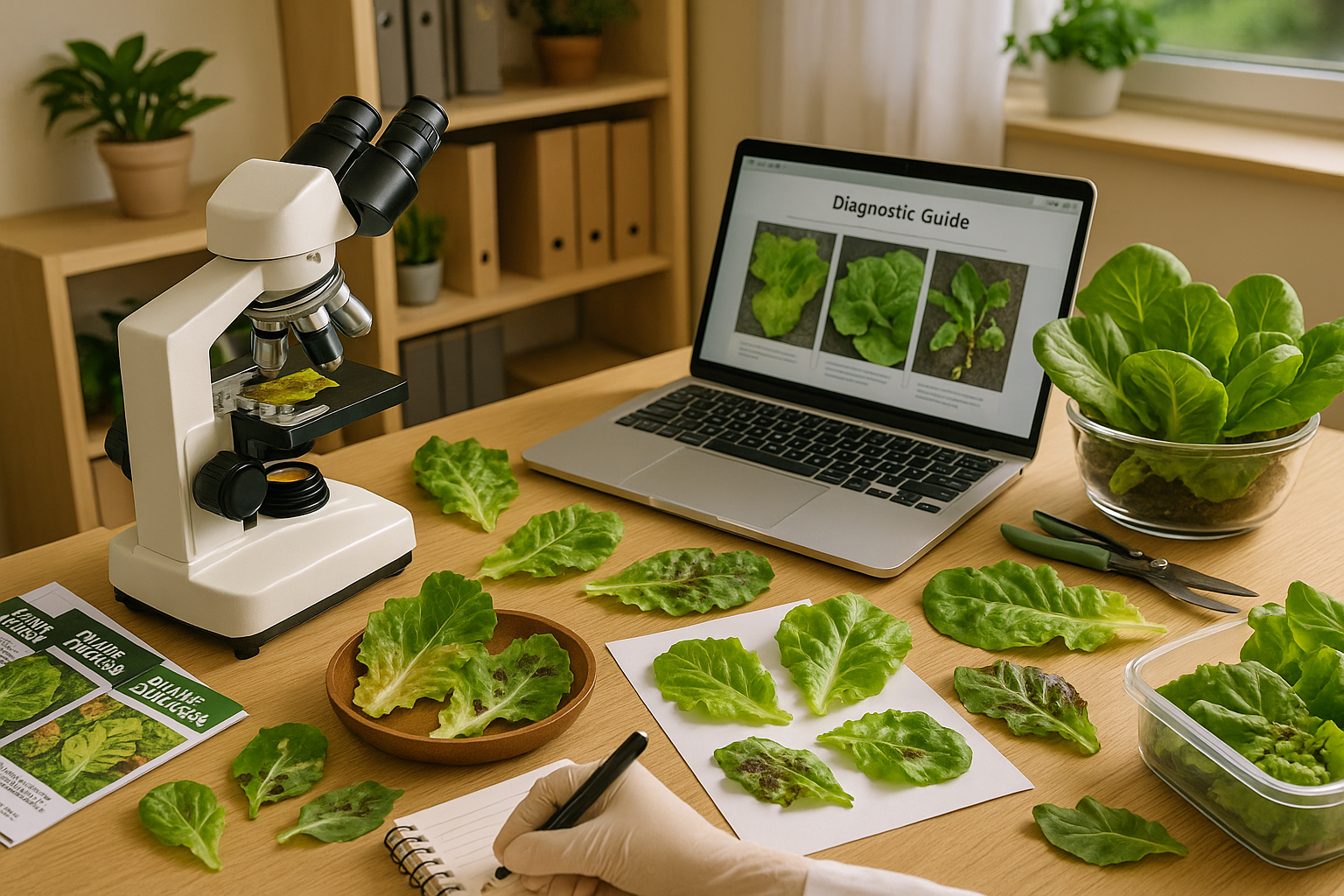
Knowing when to seek expert help can make all the difference in keeping your garden healthy and bountiful. If your plants are showing unusual symptoms like wilting, leaf spots, unexplained dieback, or stubborn pests that don’t respond to over-the-counter remedies, it’s time to consult professionals.
Local extension services—often affiliated with universities—offer free or low-cost diagnostics and advice tailored to your region’s climate and common issues. Plant pathologists can help identify complex diseases through lab tests, while experienced gardeners in your community or online forums (like those on Reddit’s r/gardening) can share firsthand insights.
If you’re dealing with persistent plant problems, you can find your nearest extension service via the National Institute of Food and Agriculture website (nifa.usda.gov), and the American Phytopathological Society (apsnet.org) offers disease fact sheets and expert contact info.
Remember, catching issues early is the key to preventing major losses, so inspect your plants regularly and document any changes with photos or notes. Don’t hesitate to reach out—prompt action and expert advice can save your garden and keep it thriving all season.
